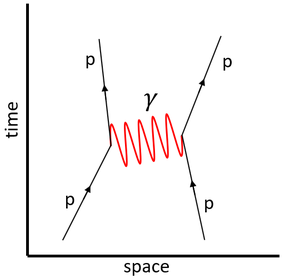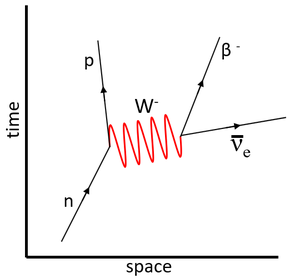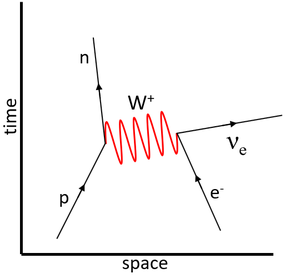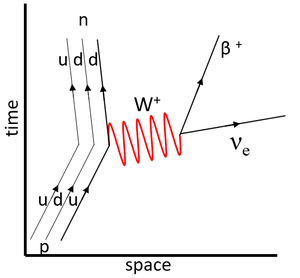Feynman Diagram
Contents
Key Stage 5
Meaning
A Feynman diagram is a type of graph used to represent the interactions between subatomic particles.
About Feynman Diagrams
- Feynman diagrams have time on the y-axis and space on the z-axis.
- Feynman diagrams are used to simplify complex equations used to represent subatomic particle interactions.
- Particles with a high velocity are seen as having shallow gradients on a Feynman diagram since they travel a large distance in space over a short duration of time.
Constructing a Feynman Diagram
- Feynman Diagrams can be constructed from the equations representing a particle interaction.
- The particles at the start of the equation are written at the bottom of the Feynman diagram while the products are written at the top.
Examples
| This Feynman diagram shows the electromagnetic interaction between two protons via the virtual photon. | This Feynman diagram shows the weak interaction in which a neutron decays into a proton.
\(n \rightarrow p + \beta^- + \bar\nu_e\) |
| This Feynman diagram shows the weak interaction in which a proton captures an electron to become a neutron.
\(p + e^- \rightarrow n + \nu_e\) |
This Feynman diagram shows the weak interaction in which an up-quark decays into a down-quark, which is observed as a proton decaying into a neutron via beta emission.
\(u \rightarrow d + \beta^+ + \nu_e\) |



